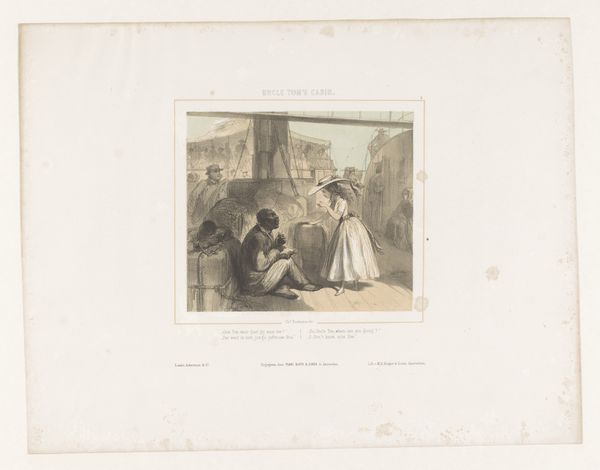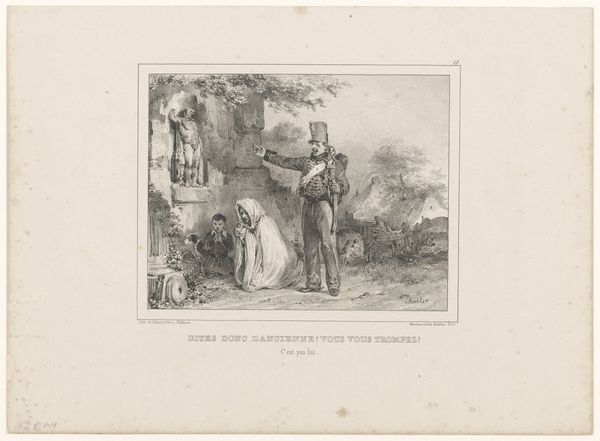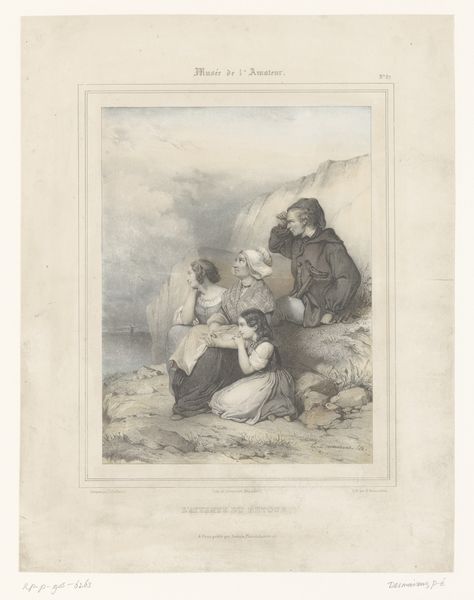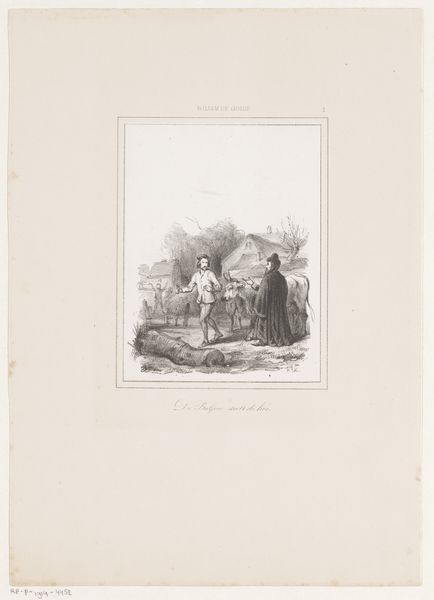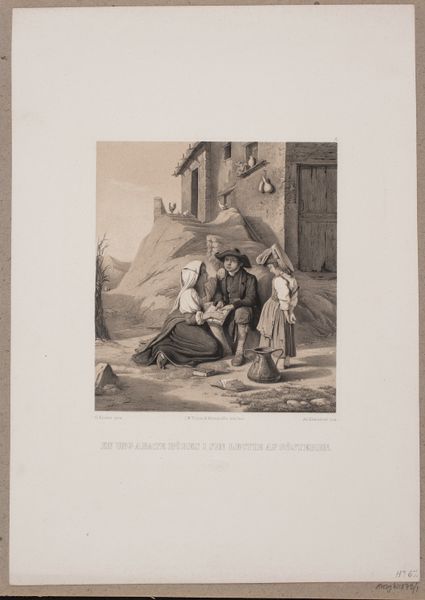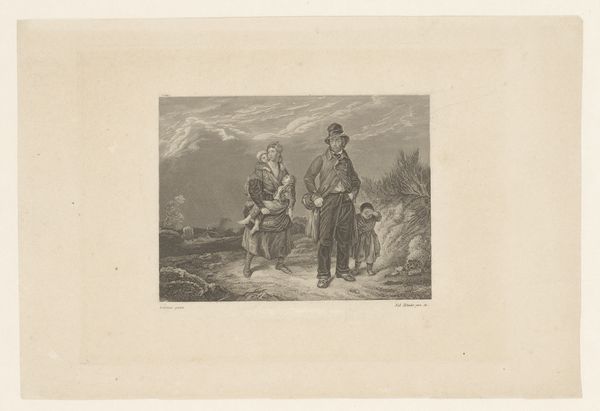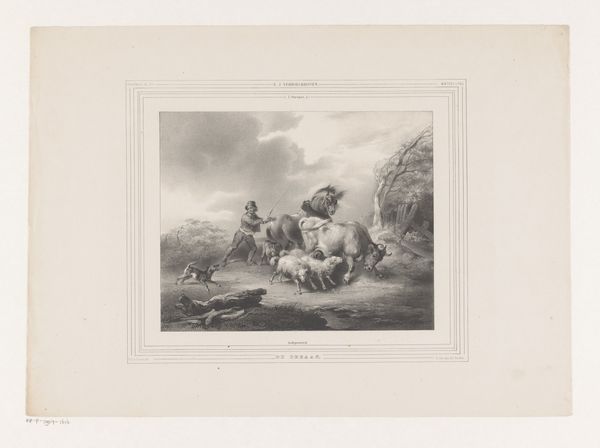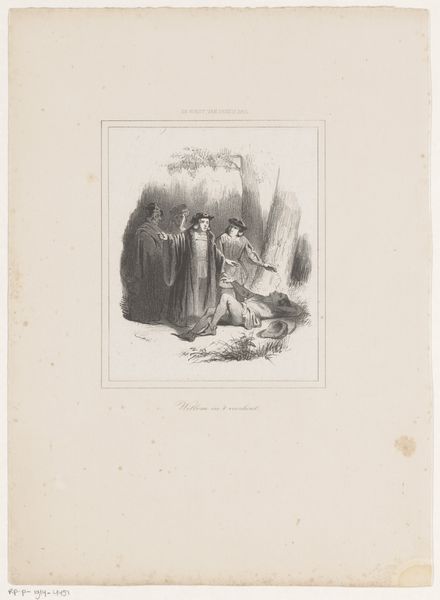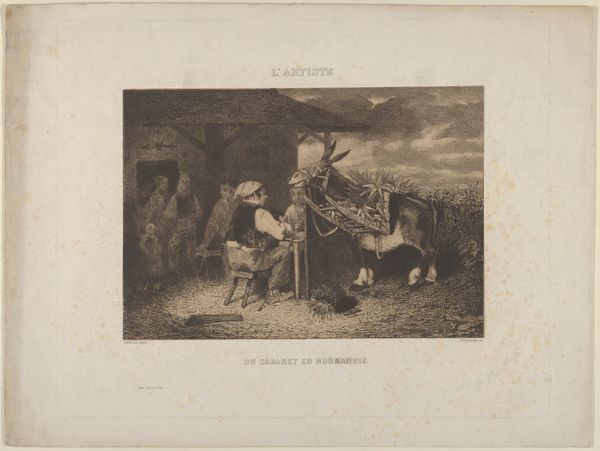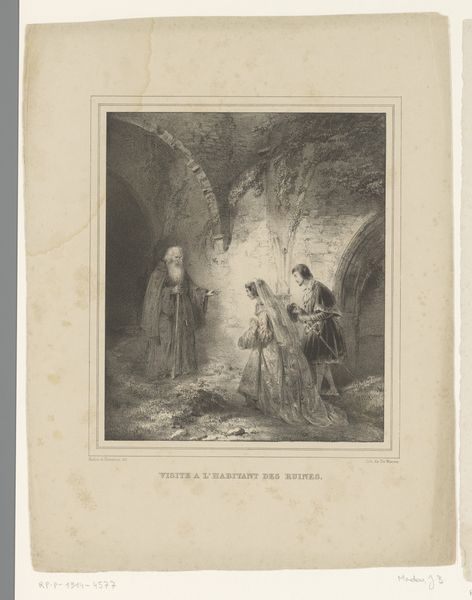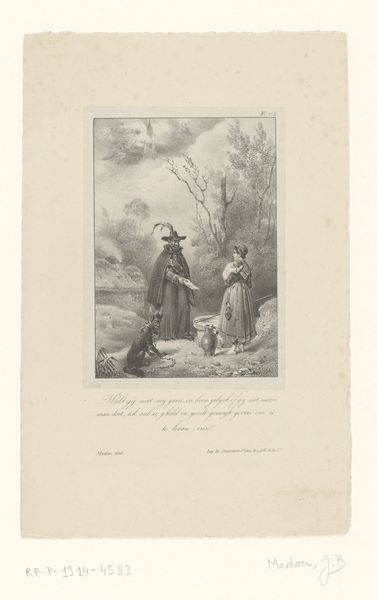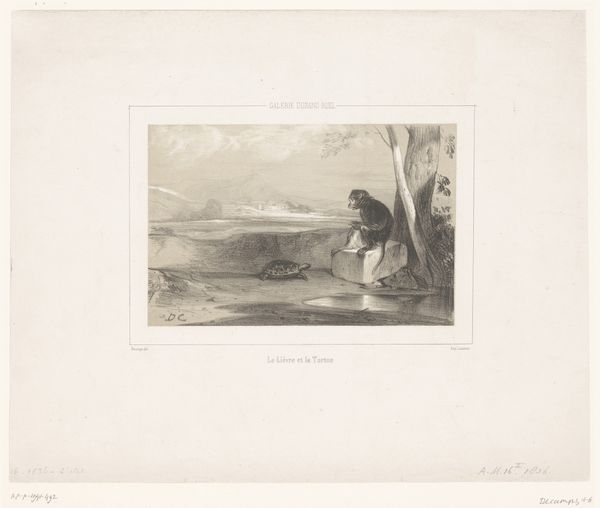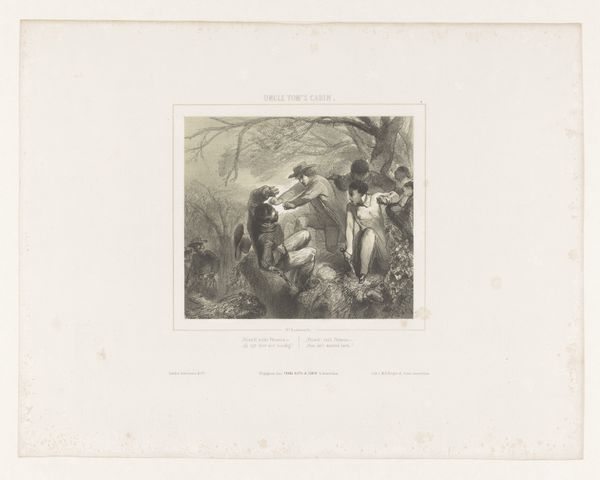
drawing, paper, pencil
#
drawing
#
narrative-art
#
landscape
#
figuration
#
paper
#
romanticism
#
pencil
#
genre-painting
Dimensions: height 404 mm, width 559 mm
Copyright: Rijks Museum: Open Domain
Jules David created this lithograph, "Weesmeisjes Rose en Blanche onderweg met hun voogd Dagobert", a print made with a fascinating method. Lithography involves drawing on a flat stone with a greasy crayon, then treating the stone so that ink adheres only to the drawn areas, allowing the image to be printed. The beauty of this method lies in its capacity to capture a wide range of tones and fine details, evident in the soft gradations of light and shadow across the landscape. The figures, rendered in delicate lines, have a gentle quality. But consider the labor behind this seemingly simple image. From the quarrying and preparation of the limestone, to the skilled hand of the artist meticulously rendering the scene, lithography was both an artistic and an industrial process. Prints like this one were consumed by a wide audience, making art accessible but also contributing to a growing market for reproducible images. Recognizing the materials and processes behind this artwork allows us to move beyond aesthetics, and consider the social context in which it was produced.
Comments
No comments
Be the first to comment and join the conversation on the ultimate creative platform.

